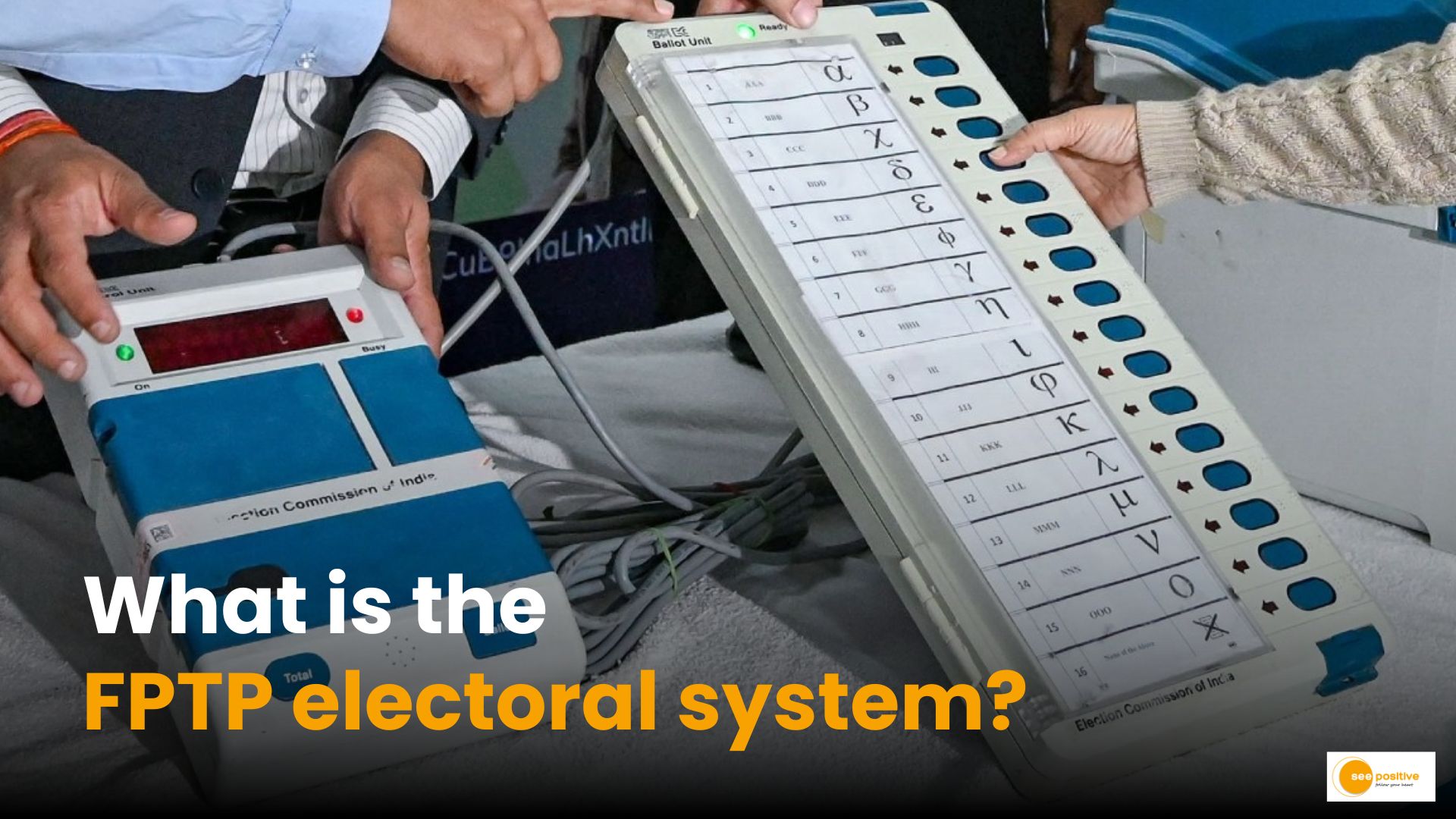India, the world’s largest democracy, is currently in the midst of its 2024 Lok Sabha elections. With nearly 96.8 crore eligible voters across the country, this colossal democratic exercise is unfolding over seven phases. But how does India’s electoral system work, and what role does the first-past-the-post (FPTP) system play in determining the winners?
What is the FPTP Electoral System?
The FPTP system is a simple and widely used method for electing representatives. In this system, the candidate who receives the highest number of votes in a constituency wins, regardless of whether they secure an absolute majority. India’s Lok Sabha elections operate on this principle, wherein voters cast their ballots for individual candidates rather than parties.
Key Features of the FPTP System:
- Single Member Constituencies: Each constituency elects only one representative to the Lok Sabha, distinguishing it from proportional representation systems.
- Winner-Takes-All: The candidate with the most votes in a constituency wins the seat, leading to a winner-takes-all outcome.
- Simple and Easy to Understand: The FPTP system is straightforward, making it accessible to voters of diverse backgrounds.
- Potential for Landslide Victories: FPTP often leads to landslide victories for dominant parties, as even a small margin of votes can secure a seat.
Implications for Lok Sabha Elections 2024:
- Coalition Dynamics: FPTP encourages the formation of pre-election alliances and coalitions to maximize electoral success, as seen in India’s multi-party political landscape.
- Regional Influence: Regional parties wield significant influence in FPTP elections, particularly in states with strong regional identities.
- Marginalization of Minor Parties: Smaller parties often struggle to translate their share of the popular vote into parliamentary representation under FPTP, leading to a concentration of power among major players.
Strategies for Political Parties:
- Targeted Campaigning: Parties focus on swing constituencies and key battleground states to maximize their seat count.
- Candidate Selection: Choosing strong and popular candidates is crucial for parties to secure victory in FPTP contests.
- Tactical Voting: Voters may strategically cast their ballots to prevent the victory of a disliked candidate or party, especially in closely contested races.
Benefits Of FPTP Electoral System
- Simplicity and Clarity: The FPTP system is straightforward. Voters choose one candidate, and the candidate with the most votes wins. This simplicity makes it easy for voters to understand and participate in the electoral process.
- Stable Governments: FPTP tends to produce single-party majorities or strong coalitions. A clear winner emerges, leading to stable governments that can implement policies without constant gridlock.
- Local Representation: Each constituency elects its own representative. This ensures that local issues and concerns are addressed by someone directly accountable to the voters in that area.
- Efficiency: FPTP elections are quicker and cost less than proportional representation systems. Counting votes and determining winners is relatively straightforward.
- Encourages Broad-Based Parties: Parties aim to appeal to a wide range of voters to win individual constituencies. This encourages parties to have a broad platform rather than catering only to specific interest groups.
- Clear Mandate: The winning party or candidate can claim a clear mandate from the people. This legitimacy enhances their ability to govern effectively.
Conclusion
The FPTP electoral system is a cornerstone of India’s democratic process, shaping the outcome of Lok Sabha elections and influencing political strategies. As the country prepares for the 2024 elections, understanding the dynamics of this system empowers voters to make informed choices and comprehend the intricacies of electoral politics.


